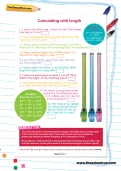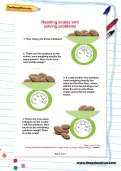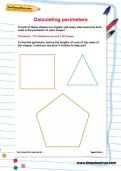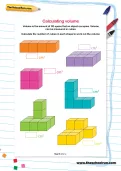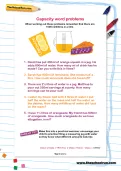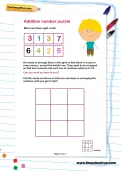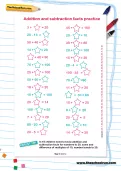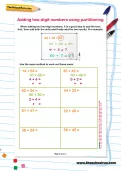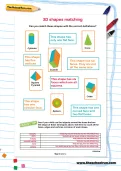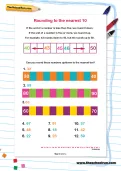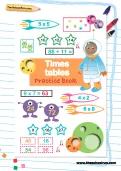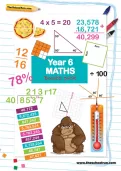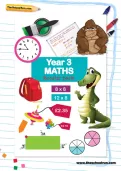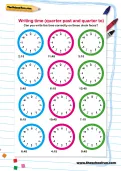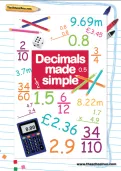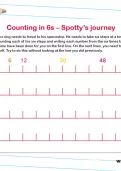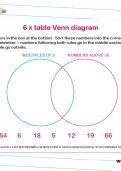Can you sort these numbers into the Carroll diagram?
or
Register to add to your saved resources
Already a subscriber? to view this content.
Here are some tricky problems that involve capacity. You can fill a measuring jug with water to help you work them out.
or
Register to add to your saved resources
Already a subscriber? to view this content.
Mark has eight cards and he needs to arrange them in this grid so that there is a card in every square, except the middle one. They need to be arranged so that each column and each row of numbers adds up to 10. Can you work out how to do it?
or
Register to add to your saved resources
How quickly can you finish this sheet of addition and subtraction calculations? Ready, steady, go...
or
Register to add to your saved resources
Already a subscriber? to view this content.
A teacher-made worksheet to help Year 3 children practise adding two-digit numbers using partitioning.
When adding two two-digit numbers, it is a good idea to add the tens first, then add both the units and finally add the two results. Can you use this method to work out these sums?
or
Register to add to your saved resources
Already a subscriber? to view this content.
Can you match these shapes with the correct definitions?
or
Register to add to your saved resources
Look at these shapes. Can you say how many sides and angles each one has?
or
Register to add to your saved resources
Already a subscriber? to view this content.
Revise the rule about when to round numbers up and when to round them down and put the theory into practice with some rounding activities.
or
Register to add to your saved resources
Already a subscriber? to view this content.
Arrow cards help you partition numbers and understand place value. Cut them out and use them to make some numbers – remember, the cards represent thousands, hundreds, tens and units (or ones). Show off your number-making skills now!
or
Register to add to your saved resources
A challenging alien investigation for Y3 mathematicians. Can they use their powers of logic and deduction to match and sort information and numbers and work out how many aliens have red feet, orange eyes, three-fingered hands and blue antennae?
or
Register to add to your saved resources
Already a subscriber? to view this content.
Evie has asked her friends and family about their favourite sports. She’s made a bar chart showing her results. Can you read the bar chart and then fill in the table?
or
Register to add to your saved resources
Already a subscriber? to view this content.
Make times tables revision easy by downloading our 90-page practice book. It covers all the tables from 2 to 12 and offers quizzes, speed challenges and more to help your child master this vital area of primary maths. Practice makes perfect!
or
Register to add to your saved resources
Already a subscriber? to view this content.
Make numbers part of everyday life with the Year 6 maths booster pack. One worksheet a day offers practice and revision, and the varied activities (spotting mystery shapes, solving puzzles and surveying family and friends to find out what the most popular Olympic sport is) will keep kids' brains active and engaged.
or
Register to add to your saved resources
Already a subscriber? to view this content.
Keep your child's numeracy learning on track with the Year 3 maths booster pack. Partitioning practice, timed challenges and problem-solving – there's a different activity to help practise everything they've learnt in school in the first year of KS2 and help them relate maths to everyday life.
or
Register to add to your saved resources
Already a subscriber? to view this content.
Practise telling the time to forty-five minutes past the hour with this time worksheet. Your child will need to match the same 'quarter to' the hour times shown on a digital and analogue clock.
or
Register to add to your saved resources
In Year 2 children learn to tell the time to quarter past and quarter to the hour. Help them practise with this simple matching worksheet.
or
Register to add to your saved resources
Already a subscriber? to view this content.
Help your child revise time-telling skills with this simple worksheet. Can they write 'quarter past' and 'quarter to' correctly on the clock faces?
or
Register to add to your saved resources
Already a subscriber? to view this content.
Do you dread decimals? Don't! Our Decimals made simple learning pack aims to take you through every aspect of primary-school decimal learning, from using decimal notation in money and measurements to converting fractions to decimals and rounding decimals to the nearest whole number. As well as a year-by-year guide to what your child learns you'll be able to complete 35 worksheets with your child to help them put their decimals knowledge into practice. And why not end a study session with a quick decimal game? Use the number spinner provided to try your hand at making the biggest (or smallest) decimal number, or speed-racing some decimal multiplication or division.
or
Register to add to your saved resources
Already a subscriber? to view this content.
Help Spotty the space dog reach his spaceship by filling in the blanks on these number lines, which can only be done by counting in 6s. Are you up for the challenge?
or
Register to add to your saved resources
Already a subscriber? to view this content.
Use a Venn diagram to sort the numbers on this worksheet to show which are in the six times table, which are greater than 30, which fall into both categories, and which don't belong in any of the categories.
or
Register to add to your saved resources
Already a subscriber? to view this content.
